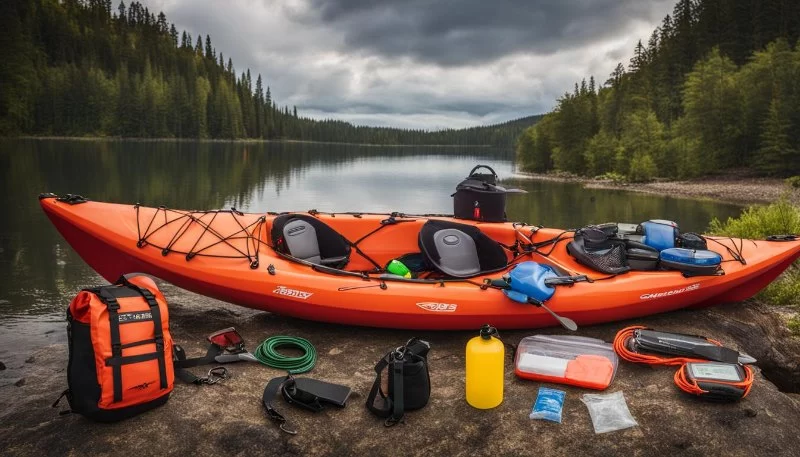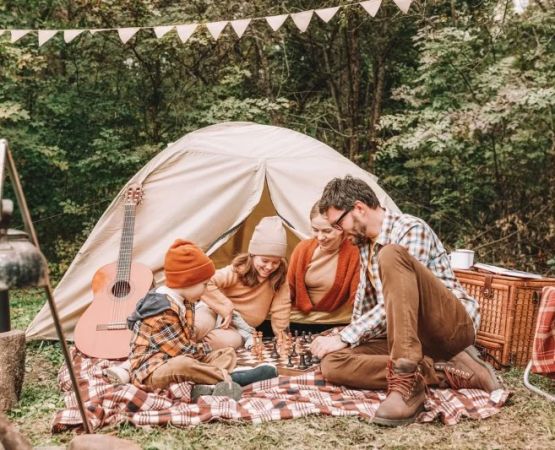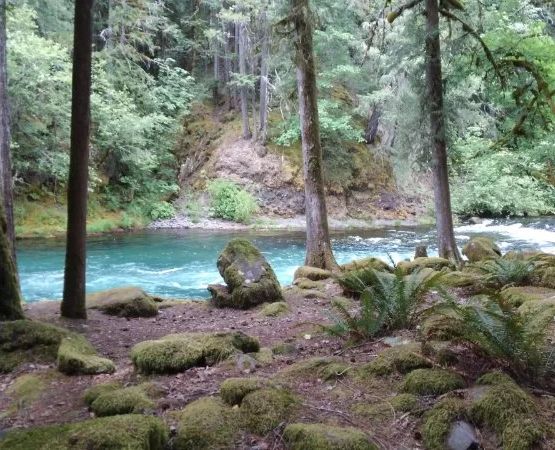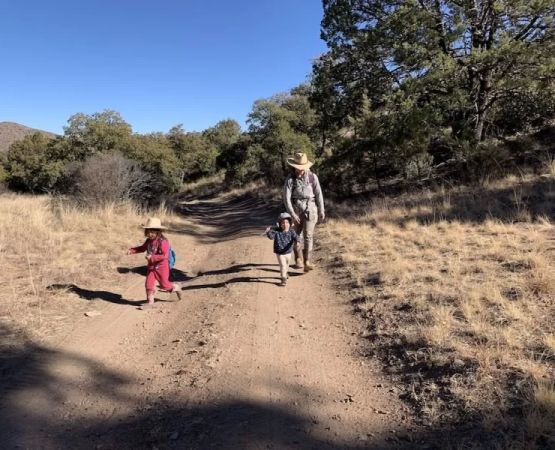- 1 - Introduction to Whitewater Kayaking and Camping
- 2 - Why Proper Gear is Crucial for Whitewater Kayaking and Camping
- 3 - Essential Gear for Whitewater Kayaking
- 4 - Camping Gear You Shouldn't Forget
- 5 - Safety Tips for Whitewater Kayaking and Camping
- 6 - How to Choose the Right Gear for Your Adventure
- 7 - Conclusion: Preparing for Your Whitewater Kayaking Trip
1 - Introduction to Whitewater Kayaking and Camping
For many outdoor enthusiasts, the combination of whitewater kayaking and camping is the ultimate adventure. The rush of navigating through fast-moving rivers and streams, followed by a night under the stars, offers a unique and exhilarating experience. However, to truly enjoy this experience, it’s essential to have the right gear for both kayaking and camping. Without the proper equipment, what should be a fun adventure can quickly turn into a stressful or even dangerous situation.
In this guide, we’ll walk you through everything you need to know about whitewater kayaking and camping gear. Whether you’re a seasoned kayaker or a first-time adventurer, the right gear can make all the difference. Let’s dive into the essentials that will ensure you stay safe, comfortable, and prepared on your next whitewater kayaking trip!
2 - Why Proper Gear is Crucial for Whitewater Kayaking and Camping
The combination of kayaking and camping in the wilderness brings with it unique challenges. From navigating through rough waters to surviving in remote locations, your gear plays a crucial role in your overall experience. Let’s explore why having the right equipment is non-negotiable.
1. Safety First
Whitewater kayaking can be a thrilling experience, but it’s also risky. The wrong equipment—like poorly fitting life jackets or inappropriate paddles—can significantly increase the risk of injury or accidents. Additionally, while camping near rivers or streams, you’ll need the proper camping gear to ensure your safety in unpredictable conditions.
2. Comfort and Convenience
When kayaking and camping, comfort is key to enjoying the experience. A well-padded seat, durable tent, and waterproof gear can make a huge difference. With the right equipment, you can focus on your adventure instead of worrying about discomfort or gear failure.
3. Performance and Efficiency
Good-quality gear improves your performance both on the water and at the campsite. Efficient kayaking gear helps you navigate rapids with greater control, while effective camping gear ensures you stay warm, dry, and rested for your next day of adventure.
3 - Essential Gear for Whitewater Kayaking
When it comes to whitewater kayaking, the gear you use can make or break your experience. Let’s look at the must-have equipment for kayaking:
1. Kayak
Choosing the right kayak is the first step in preparing for your adventure. For whitewater kayaking, you’ll want a boat that’s stable, responsive, and able to handle fast-moving water. Look for kayaks designed specifically for whitewater, as they are built to withstand the challenges posed by turbulent waters.
2. Paddles
When selecting a paddle, consider the material, length, and blade design. A lightweight paddle made of fiberglass or carbon fiber is ideal for whitewater kayaking. Longer paddles give you more reach, while shorter paddles provide more control.
3. Life Jacket (PFD)
Your life jacket, or personal flotation device (PFD), is your most important piece of safety equipment. Make sure it fits snugly, allows for a full range of motion, and is designed for whitewater kayaking. Look for one with a high-back design for comfort in the seat of your kayak.
4. Helmet
Protecting your head is crucial in whitewater kayaking, as rapid currents can lead to unpredictable situations. A well-fitting helmet specifically designed for kayaking will protect your skull from impacts with rocks and other obstacles.
5. Dry Bags
Keeping your belongings dry is essential when kayaking. Dry bags come in a range of sizes and materials, designed to keep your gear safe from water. Store your clothes, electronics, and food in these bags to ensure they stay dry throughout your journey.
4 - Camping Gear You Shouldn't Forget
Once you’ve finished a thrilling day of kayaking, a comfortable campsite is crucial for recovery and relaxation. Here’s the essential camping gear you’ll need:
1. Tent
Your tent should be compact, lightweight, and durable, as it will serve as your home base for the night. For whitewater kayaking trips, a two-person tent is usually sufficient, but consider a larger tent if you’re traveling in a group.
2. Sleeping Bag and Pad
After a day of paddling, a good night’s sleep is essential. Look for a sleeping bag suited to the season, and don’t forget a sleeping pad to provide insulation from the cold ground.
3. Cooking Equipment
When camping near water, it’s important to have compact, lightweight cooking gear. A portable stove, cooking pots, and a reliable fuel source will help you prepare hot meals and stay energized for your adventures.
4. Food and Water
Hydration is key during kayaking and camping. Bring a water filter or purification tablets to ensure access to safe drinking water. Also, pack lightweight, non-perishable foods like freeze-dried meals, nuts, and energy bars.
5. First-Aid Kit
A well-stocked first-aid kit is essential for any outdoor activity. Make sure your kit includes bandages, antiseptics, blister pads, and any medications you might need during your trip.
5 - Safety Tips for Whitewater Kayaking and Camping
Ensuring your safety on a whitewater kayaking trip requires preparation and awareness. Here are some key safety tips:
1. Know the Water Conditions
Before you begin kayaking, make sure to research the river or stream you’ll be navigating. Understand the water’s flow, potential hazards, and difficulty level to assess whether it’s suitable for your skill level.
2. Wear Proper Safety Gear
Always wear your life jacket and helmet, even if the water appears calm. These are essential for your protection in the event of an accident or capsize.
3. Practice Safety Protocols
Learn basic kayaking rescue techniques and be prepared to help others in case of an emergency. It’s also important to paddle with a buddy and let someone know your trip details.
6 - How to Choose the Right Gear for Your Adventure
Choosing the right gear for your whitewater kayaking and camping trip depends on several factors:
1. Understand Your Skill Level
Your skill level will influence the type of kayak and safety gear you need. Beginners might benefit from a more stable kayak, while advanced kayakers may prefer a more agile design.
2. Consider the Environment
Weather and terrain should dictate your gear choices. For instance, if you’re kayaking in cold conditions, you’ll need thermal clothing and a winterized sleeping bag. If you’re paddling in a hot climate, opt for lightweight gear and sun protection.
3. Prioritize Comfort and Durability
Ensure that your gear is both comfortable and durable. Spending long hours on the water or at the campsite means your equipment needs to be reliable and supportive.
7 - Conclusion: Preparing for Your Whitewater Kayaking Trip
Whitewater kayaking and camping offer incredible opportunities for adventure, but success lies in preparation. The right gear—ranging from your kayak and safety equipment to your camping essentials—ensures you’ll stay safe, comfortable, and prepared. Whether you’re a beginner or an experienced kayaker, investing in high-quality, durable gear will elevate your outdoor experience.
For top-notch kayaking and camping gear recommendations, be sure to visit Pine Cliff Resort for the best products and expert advice to ensure your next adventure is unforgettable.







